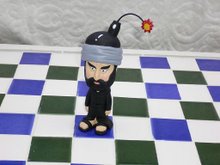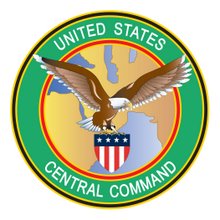
-J Steele
U.S. heroes are villains at cemetery in Mexico
Chris Hawley
Republic Mexico City Bureau
May. 26, 2007 12:00 AM
MEXICO CITY - From the beaches of Normandy to Manila in the Philippines, Americans will gather at military cemeteries around the world on Monday to honor soldiers who died defending freedom. Except at one cemetery, where the Americans are seen as invaders, not heroes.
At the U.S. National Cemetery in Mexico City, American dignitaries will quietly pay tribute on Memorial Day to 750 soldiers who died during the 1847 invasion of the Mexican capital, a campaign that forced Mexico to cede about 40 percent of its territory to the United States.
Unlike other U.S.-run war cemeteries in Europe and the Philippines, it's the only place where the buried Americans are considered villains.
"In our World War I and World War II cemeteries, we were the liberators, we were going over to fight tyranny," said Mike Conley, spokesman for the American Battle Monuments Commission, which runs the cemetery. "That definitely puts Mexico City in a different niche."
On Monday, the U.S. ambassador and a Marine honor guard will hold a Memorial Day ceremony at the Mexico City cemetery, just as Americans do at the other 163 national cemeteries worldwide.
But Mexican government officials are not expected to attend. Even some of the cemetery's neighbors view the event with contempt.
"As a Mexican, I don't like it at all," said Maria Trejo, 55, who has lived near the cemetery for 30 years.
"Those soldiers should be buried in the United States, where they belong," Gustavo Martel, 33, said as he played in a nearby park with his nephew.
Most Mexicans, however, have never heard of the site. The 1-acre cemetery is hidden behind a high wall next to a roaring expressway, and there are no signs other than the "U.S. National Cemetery" spelled out in wrought-iron letters above the gate.
The cemetery doesn't appear on most city maps, and few guidebooks mention it.
More than 763,000 Americans visited Mexico City last year, but only 2,500 people, mostly Mexicans, stopped by the cemetery. The U.S. cemetery in Normandy, France, gets about a million visitors annually, the monuments commission says.
"Some days, we don't get any visitors at all," cemetery superintendent Hector de Jesus said.
That's a shame, he said, because the battle for Mexico City was one of the most dramatic episodes in U.S. history. American soldiers who would later face each other in the Civil War were comrades here. Their victory reshaped North America and fueled Mexican anger that still taints relations between the two countries.
The battle was the climax of the 1846-48 Mexican-American war, which began as a dispute over the boundaries of Texas.
The Mexico City campaign's most famous confrontation was on Chapultepec Hill, where teenage cadets at the Mexican military academy fought to the death against the American troops. Every Mexican schoolchild is taught the story of cadet Juan Escutia, who wrapped himself in the Mexican flag and threw himself from a cliff rather than be captured by the Americans.
The American cemetery sits beside the former San Cosme causeway, where Maj. Robert E. Lee's troops fought their way into the center of the city after the Chapultepec battle.
A young lieutenant, Ulysses S. Grant, commanded a howitzer that pounded Mexican troops from the bell tower of the San Cosme church.
Lee and Grant later became foes during America's Civil War, fought from 1861 to '65. When Lee met with Grant in Virginia to surrender in the village of Appomattox Court House, the two men reminisced about their time in Mexico, according to accounts of the meeting.
The capture of Mexico City led to the 1848 Treaty of Guadalupe Hidalgo, in which Mexico gave up what is now California, Nevada, Utah, Arizona, and parts of New Mexico, Colorado and Wyoming.
After the war, the U.S. government collected the remains of unidentified soldiers buried in shallow graves around the city. It opened the cemetery in 1851, making it the oldest of the 24 national cemeteries outside the United States.
The bones of the 750 soldiers are buried in a common grave under a white monument in the center of the cemetery. Along either side are vaults containing 813 other Americans, mainly diplomats, ex-soldiers and their families, who lived in Mexico City and were buried in the same plot.
Some of those dead are U.S. Confederate officers who fled to Mexico after the South's defeat in the Civil War.
The highest-ranking occupant is Confederate Gen. James E. Slaughter. He fought in the last battle of the Civil War, in Brownsville, Texas, on May 12-13, 1865, after much of the Confederate army had already surrendered.
The cemetery was closed to new burials in 1924. In the 1970s, the U.S. government sold half of the original 2 acres to make way for construction of Mexico City's Interior Circuit highway. Bodies of the 813 identified Americans were dug up and put into aboveground crypts, each marked with a white headstone.
"Some of the people who come here, the Mexicans, they do have regrets about the Americans having this place," de Jesus said. "I try to explain to them the reason why we're here: It's to preserve history."
As he spoke, a lone visitor, college student Antonio de Alcazar, 23, walked through the gate and began reading the tombstones.
"I don't see anything wrong with them being here," Alcazar said "In the end, we're all human beings, and it doesn't matter who's buried where. Eventually, we all go into the ground."
At the U.S. National Cemetery in Mexico City, American dignitaries will quietly pay tribute on Memorial Day to 750 soldiers who died during the 1847 invasion of the Mexican capital, a campaign that forced Mexico to cede about 40 percent of its territory to the United States.
Unlike other U.S.-run war cemeteries in Europe and the Philippines, it's the only place where the buried Americans are considered villains.
"In our World War I and World War II cemeteries, we were the liberators, we were going over to fight tyranny," said Mike Conley, spokesman for the American Battle Monuments Commission, which runs the cemetery. "That definitely puts Mexico City in a different niche."
On Monday, the U.S. ambassador and a Marine honor guard will hold a Memorial Day ceremony at the Mexico City cemetery, just as Americans do at the other 163 national cemeteries worldwide.
But Mexican government officials are not expected to attend. Even some of the cemetery's neighbors view the event with contempt.
"As a Mexican, I don't like it at all," said Maria Trejo, 55, who has lived near the cemetery for 30 years.
"Those soldiers should be buried in the United States, where they belong," Gustavo Martel, 33, said as he played in a nearby park with his nephew.
Most Mexicans, however, have never heard of the site. The 1-acre cemetery is hidden behind a high wall next to a roaring expressway, and there are no signs other than the "U.S. National Cemetery" spelled out in wrought-iron letters above the gate.
The cemetery doesn't appear on most city maps, and few guidebooks mention it.
More than 763,000 Americans visited Mexico City last year, but only 2,500 people, mostly Mexicans, stopped by the cemetery. The U.S. cemetery in Normandy, France, gets about a million visitors annually, the monuments commission says.
"Some days, we don't get any visitors at all," cemetery superintendent Hector de Jesus said.
That's a shame, he said, because the battle for Mexico City was one of the most dramatic episodes in U.S. history. American soldiers who would later face each other in the Civil War were comrades here. Their victory reshaped North America and fueled Mexican anger that still taints relations between the two countries.
The battle was the climax of the 1846-48 Mexican-American war, which began as a dispute over the boundaries of Texas.
The Mexico City campaign's most famous confrontation was on Chapultepec Hill, where teenage cadets at the Mexican military academy fought to the death against the American troops. Every Mexican schoolchild is taught the story of cadet Juan Escutia, who wrapped himself in the Mexican flag and threw himself from a cliff rather than be captured by the Americans.
The American cemetery sits beside the former San Cosme causeway, where Maj. Robert E. Lee's troops fought their way into the center of the city after the Chapultepec battle.
A young lieutenant, Ulysses S. Grant, commanded a howitzer that pounded Mexican troops from the bell tower of the San Cosme church.
Lee and Grant later became foes during America's Civil War, fought from 1861 to '65. When Lee met with Grant in Virginia to surrender in the village of Appomattox Court House, the two men reminisced about their time in Mexico, according to accounts of the meeting.
The capture of Mexico City led to the 1848 Treaty of Guadalupe Hidalgo, in which Mexico gave up what is now California, Nevada, Utah, Arizona, and parts of New Mexico, Colorado and Wyoming.
After the war, the U.S. government collected the remains of unidentified soldiers buried in shallow graves around the city. It opened the cemetery in 1851, making it the oldest of the 24 national cemeteries outside the United States.
The bones of the 750 soldiers are buried in a common grave under a white monument in the center of the cemetery. Along either side are vaults containing 813 other Americans, mainly diplomats, ex-soldiers and their families, who lived in Mexico City and were buried in the same plot.
Some of those dead are U.S. Confederate officers who fled to Mexico after the South's defeat in the Civil War.
The highest-ranking occupant is Confederate Gen. James E. Slaughter. He fought in the last battle of the Civil War, in Brownsville, Texas, on May 12-13, 1865, after much of the Confederate army had already surrendered.
The cemetery was closed to new burials in 1924. In the 1970s, the U.S. government sold half of the original 2 acres to make way for construction of Mexico City's Interior Circuit highway. Bodies of the 813 identified Americans were dug up and put into aboveground crypts, each marked with a white headstone.
"Some of the people who come here, the Mexicans, they do have regrets about the Americans having this place," de Jesus said. "I try to explain to them the reason why we're here: It's to preserve history."
As he spoke, a lone visitor, college student Antonio de Alcazar, 23, walked through the gate and began reading the tombstones.
"I don't see anything wrong with them being here," Alcazar said "In the end, we're all human beings, and it doesn't matter who's buried where. Eventually, we all go into the ground."





No comments:
Post a Comment